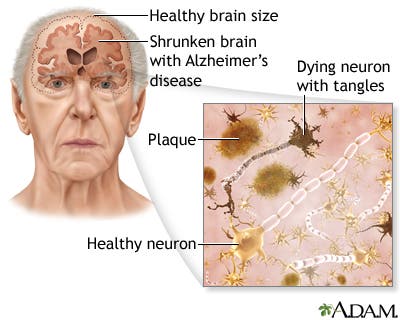
Researchers at the Sanford-Burnham Medical Research Institute (Sanford-Burnham) have found a chemical switch that both regulates the generation of new neurons from neural stem cells and the survival of existing nerve cells in the brain. Postmortem examination of the brains of Alzheimer’s patients and stroke victims found the switch that shuts off the signals was in abundance. With this in mind, it’s possible that a drug that targets the switch, called MEF2, might prevent neuronal loss in a variety of neurodegenerative diseases, such as Alzheimer’s, Parkinson’s and autism.
“We have shown that when nitric oxide (NO)—a highly reactive free radical—reacts with MEF2, MEF2 can no longer bind to and activate the genes that drive neurogenesis and neuronal survival,” said Stuart Lipton, M.D., Ph.D., director and professor in the Neuroscience and Aging Research Center at Sanford-Burnham, and a practicing clinical neurologist. “What’s unique here is that a single alteration to MEF2 controls two distinct events—the generation of new neurons and the survival of existing neurons,” added Lipton, who is senior author of the study.
Switching new neurons on and off
Transcription factors are proteins that control which genes are turned on or off in the genome. They do so by binding to DNA and other proteins. Once bound to DNA, these proteins can promote or block the enzyme that controls the reading, or “transcription,” of genes, making genes more or less active. In the brain, the transcription factors are paramount to linking external stimuli to protein production, enabling neurons to adapt to changing environments. Previous research showed that the MEF2 family of transcription factors plays an important part in the neurogenesis and neuronal survival, as well as in the processes of learning and memory. On the opposite side, MEF2 mutations have been linked with neurodegenerative disorders, including Alzheimer’s and autism.
The NO-protein modification process mentioned by Lipton earlier was first described him and his collaborators some 20 years ago (S-nitrosylation). S-nitrosylation involves the covalent incorporation of a nitric oxide moiety into thiol groups, to form S-nitrosothiol (SNO). S-nitrosylation of MEF2 controlls neuronal survival in Parkinson’s disease and has important regulatory functions under normal physiological conditions throughout the body.
“Now we have shown that this same reaction is more ubiquitous, occurring in other neurological conditions such as stroke and Alzheimer’s disease. While the major gene targets of MEF2 may be different in various diseases and brain areas, the remarkable new finding here is that we may be able to treat each of these neurological disorders by preventing a common S-nitrosylation modification to MEF2.”
“The findings suggest that the development of a small therapeutic molecule—one that can cross the blood-brain barrier and block S-nitrosylation of MEF2 or in some other way increase MEF2 transcriptional activity—could promote new brain cell growth and protect existing cells in several neurodegenerative disorders,” added Lipton.
“We have already found several such molecules in our high-throughput screening and drug discovery efforts, so the potential for developing new drugs to attack this pathway is very exciting,” said Lipton.
The study was published in Cell Reports.






